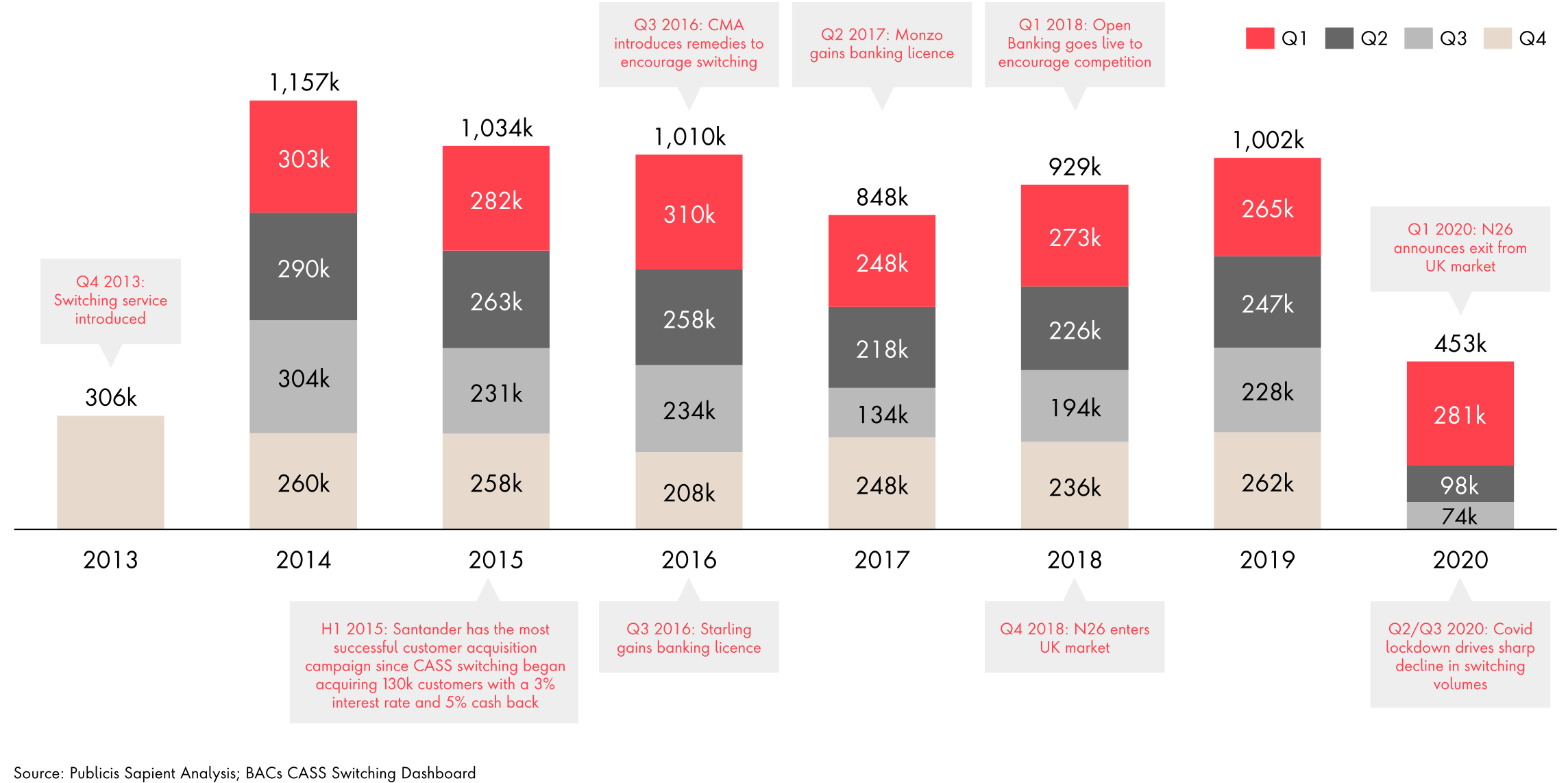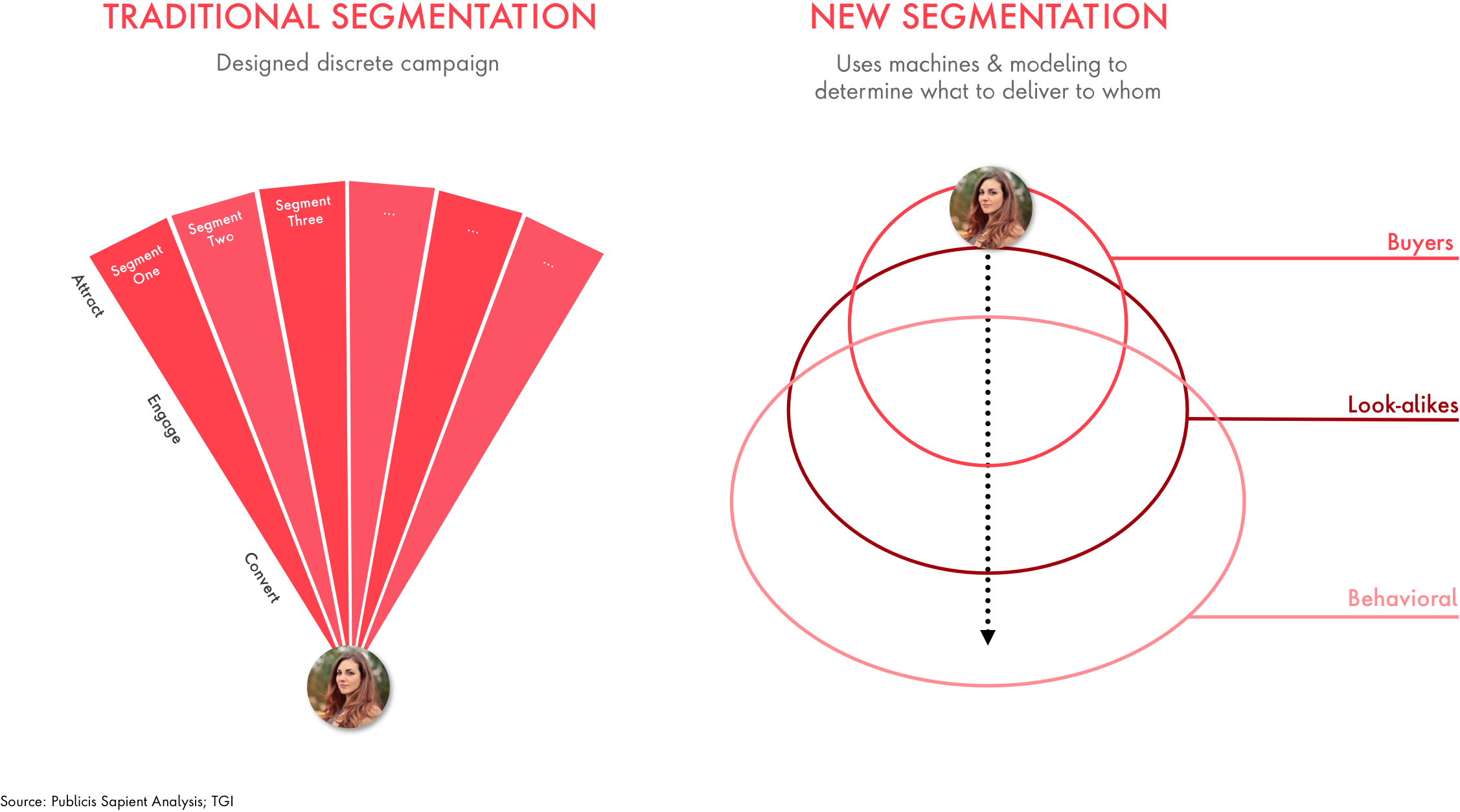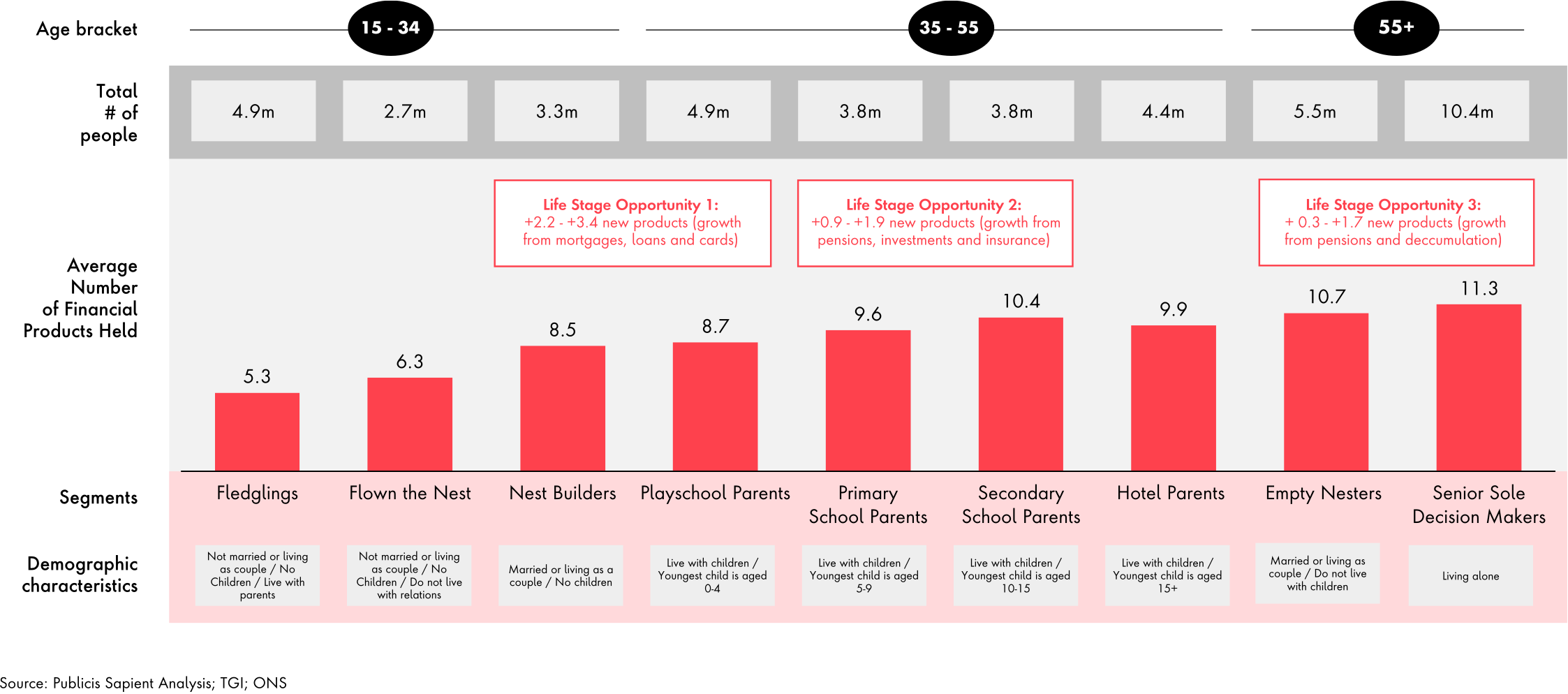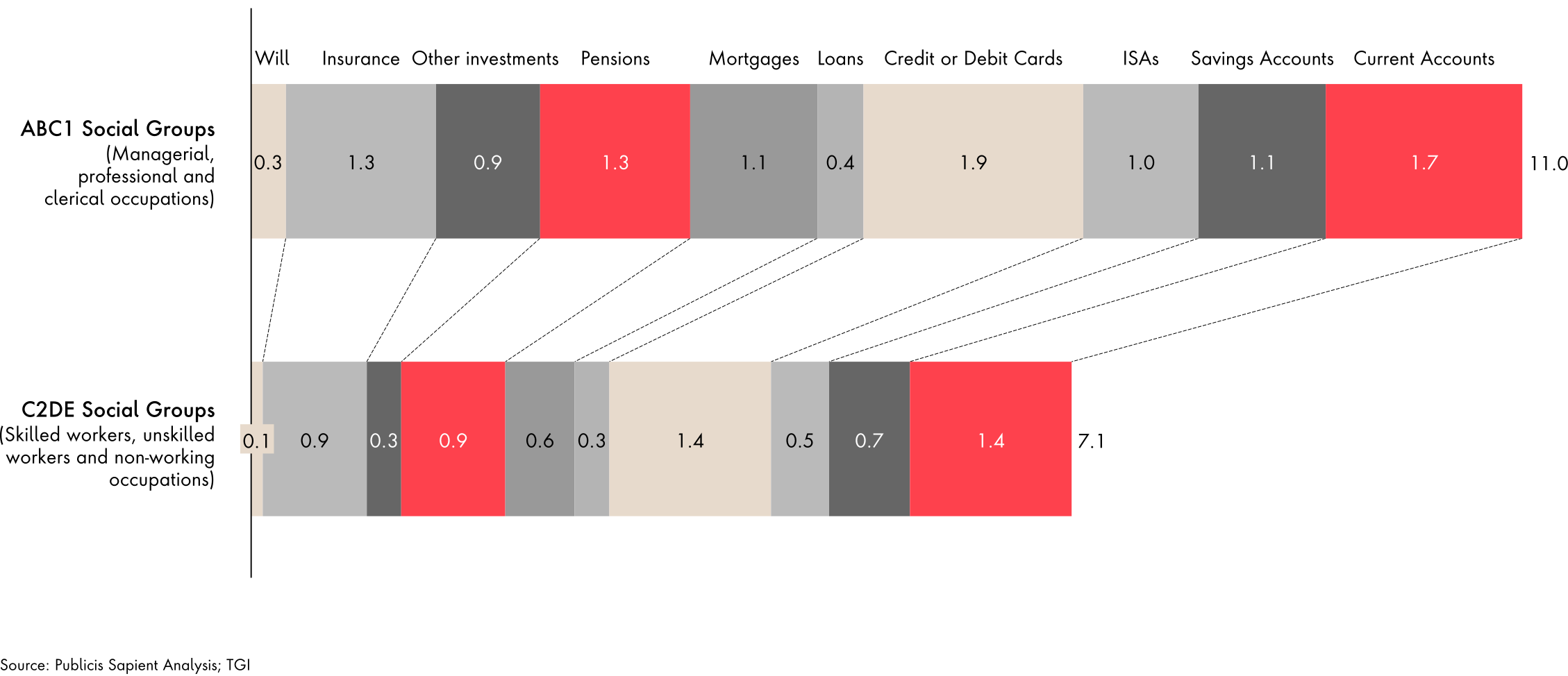What issue can we solve for you?
Type in your prompt above or try one of these suggestions
Suggested Prompt



Insight
When Banks Target New Customers, Personalization Is Paramount
When Banks Target New Customers, Personalization Is Paramount
Established financial institutions need to target the right people at the right time. But truly seizing the opportunity in this space will require hyper-personalization.
Most banking customers don’t think much about the industry unless they’ve reached a crossroads where they need a particular service. That means few people are actively looking to switch banks or are particularly susceptible to traditional marketing tactics.
If banking customers only think about switching providers at certain times in their lives, it’s vitally important for financial institutions to leverage data for a holistic view of potential clients.
That way banks can avoid wasting time and energy marketing to people at the wrong time. They can target the right individuals when it counts. And they can approach potential customers with a personal touch.
Customer acquisition
In efforts to encourage competition and increase customer churn, the United Kingdom’s open banking and the European Union's updated Payment Services Directive (PSD2) have compelled banks to open up their data. There has also been a steady stream of new fintech entrants. Nothing helped.
The low level of customer churn creates a challenge in finding new customers.
Banks that have successfully drawn new customers have spent mightily to do so. For example, in the UK, three established, non-fintech institutions (Nationwide, HSBC and NatWest) actually expanded their list of active accounts in 2019. Each of these institutions offered £100 to £200 incentives to buy customer attention.
In 2019, the UK retail banking industry spent £233 million on conventional, above-the-line advertising: TV, radio, billboards, online ads, etc. Rather than this blunt force approach, there must be more efficient ways.
Banks would be able to offer compelling enough reasons for potential customers to ditch their current providers and open new accounts – if they know a bit about what those people need.
Figure 1: Historic UK switching volumes in decline
The current customer acquisition model doesn’t work, despite regulatory intervention, and new entrants switching volumes are declining.

Hyper-personalization
It’s important to use modern technology to offer the right products at the right time.
Banks used to develop campaigns around segmentation models that were marketed toward specific groups. They would try to drive conversion through the funnel regardless of where an individual prospect was in life – without any knowledge of whether their circumstances indicated they were ready for a new product.
Artificial intelligence (AI) and machine learning (ML) enable a new degree of hyper-personalization that can produce predictive models that actually “reverse the funnel.”
Rather than starting with raising awareness and ending with selling a product or service, banks can target people in need of specific products at the appropriate time and make the sale. With success and quality, brand awareness will grow.
This requires much stronger marketing and acquisition data. Enterprise-quality data – that which is the basis for large resource allocation decisions – is managed, governed, cared for, updated and defined with high-grade technology and data lineages. By contrast, most marketing and customer experience data is far lower quality.
Figure 2: New versus old customer segmentation techniques

A new take on an old truth
It is a well-known truth that customers don’t think about banking products. A more positive way to look at this is that people do think about banking when it most affects their lives. Indeed, many banks are even organized to reflect these life stages. For example, most banks have dedicated teams for students or retirees.
Nevertheless, most banks are not unlocking the value in their first and third-party data to effectively identify these moments. They are not targeting customers proactively when the opportunity to serve them new products arises based on their current or impending circumstances.
Figure 3: Life stage view of customer product holdings and opportunities
The way to capture new customers is to offer them products at the right time; this means knowing when their circumstances present opportunities for new products.
A Life Stage View of UK Customer Segments

For such an approach to work, financial institutions need a granular understanding of individual customer needs. A simple demographic comparison quickly reveals how a single variable can drastically change customer product holdings. This is illustrated below based on social/employment groups.
These differences only increase as you focus on the circumstances of an individual person rather than a segment of customers.
Figure 4: Example variance in product holdings by different social/employment groups in a single segment
The variance caused by different circumstances is significant, in-depth understanding of an individual’s circumstances is needed for product offers to be relevant.
Example: Primary School Parents’ Average Number of Financial Products Held
Variance by social group

Using data to improve the experience
Hyper-personalization can also improve customer advocacy and minimize the amount of people who drop out during the onboarding process. This personalization happens at three levels (with increasing complexity):
- Dynamic creative – Supplying specific marketing content that’s most likely to resonate with that individual customer.
- Product personalization – Changing the financial product features and pricing to reflect the circumstances of that customer.
- Flexible design – Creating a personal experience through highly modular and loosely coupled design. Ultimately, banks should apply computational strategies to the design process. By integrating customer data and pattern analysis, banks can change the customer interface continuously throughout the journey.
What’s at stake and what it takes
In the inert British market, banks could be forgiven for not tackling their acquisition challenge proactively by providing a compelling reason to use their products. However, other markets show that this could lead to significant disruption if just one player figures out how to drive customer acquisition through data.
Zhong An, an online insurance company in China, is one such business to achieve phenomenal success. It offers targeted micro-insurance policies at the point of transactions (e.g. shipment insurance made through online marketplaces like Alibaba). In just five years, Zhong An went from a startup to a business with 432,000 customers that underwrites 5.1 billion annual policies.
To fend off this type of disruption, banks need to act now. That means unlocking the value of their first-party data and enriching it with third-party data to enable predictive models that identify those life stages which create the need for a financial product. These interventions need to be delivered in the channel where the customer is (be it a banking app, social media or web). All of this will need to be enabled by a fast paced, test and learn approach to experience design.
How to get started
The most effective way to build and scale leading customer-acquisition capabilities is through in-market experiments. This ensures that a regular customer feedback loop can validate the approach taken while the core capabilities are developed.
This will require a set of iterative cycles to incrementally develop the capability, starting with value and ultimately taking the new acquisition capability into production.
Figure 5: Example cycles to create the new capability
Old vs new segmentation for customer segmentation

At the same time, Publicis Sapient can supplement existing client data using our Epilson data asset, which has more than 25 million customer records with verified data that can be matched to client data and used to enhance use cases as required.
Globally, banks have failed to acquire new customers. But that doesn’t need to be the case. With smart hyper-personalization strategies, powered by robust data, they can finally change this long-time trend.
Eventually, and not in the too distant future, they will need to.
Related Articles
-
![Promo one]()
Authentic Communication: The Catalyst for Culture Change
By reinforcing core values though leadership action while recognizing employees, organizations can create new change stories that unite the workforce.
-
![Promo two]()
The First Step to Changing Company Culture? Understand Your People
As companies continue to change, a shift must also consider the intricacies of the most important asset: people.
-
![]()
Speed Layer for Nationwide Building Society
Learn about our development of the fast, secure and scalable digital foundation that increases the resilience and availability of services.








